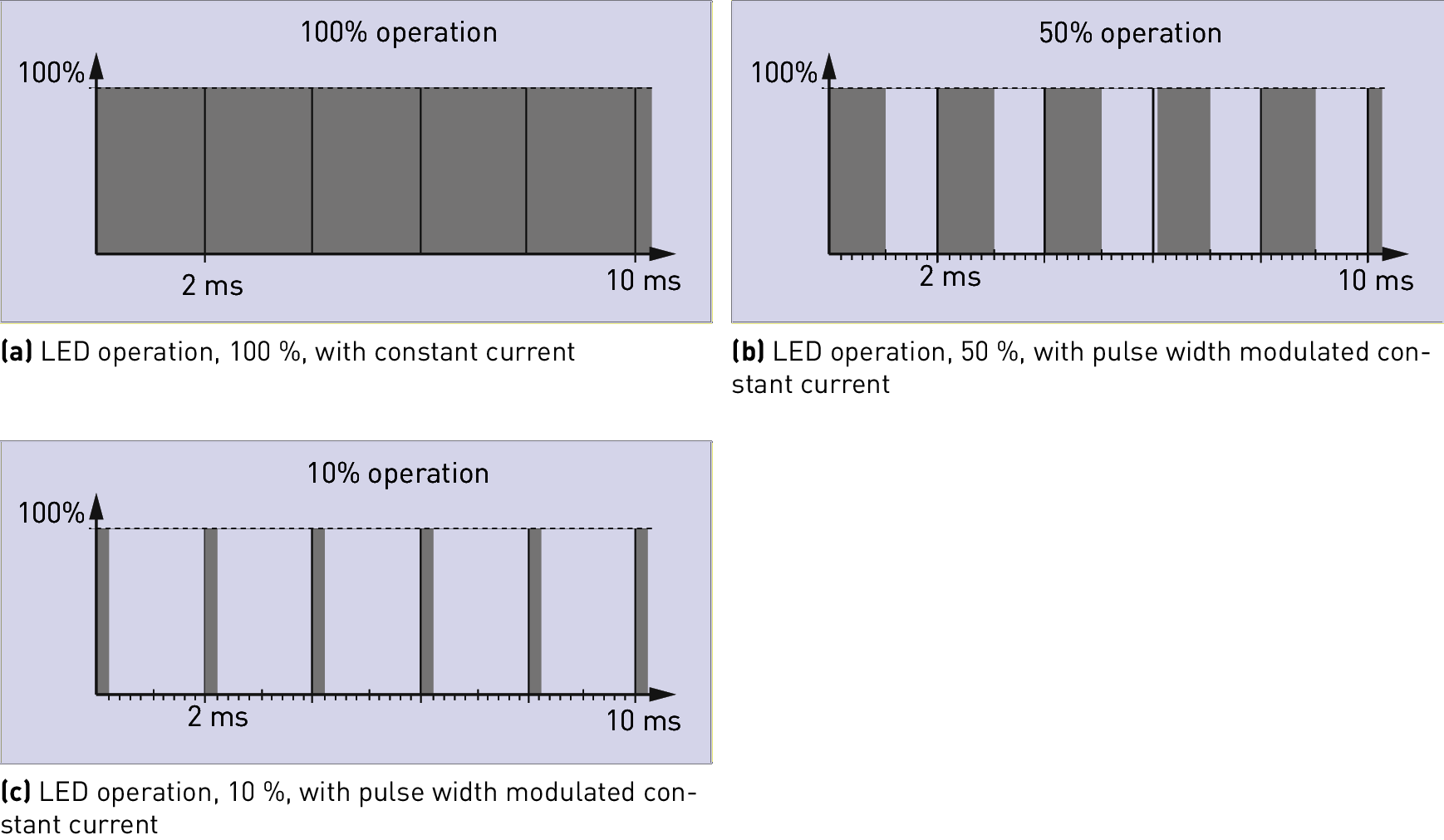Modern solutions for all tasks in contemporary lighting technology require a high measure of calculability and replicability of results as well as reliability of the overall system and its components. One of those tasks is dimming of light sources, which must be executed in a defined manner to facilitate the precise setting of a required lighting level or a desired light colour (see also chapter "DALI"). Fundamentally, there are two options for this:
continuous variation of lumen output with permanent light emission, and
variation of temporal interruptions in light emission with short intervals below the eye’s perceptual speed threshold.
